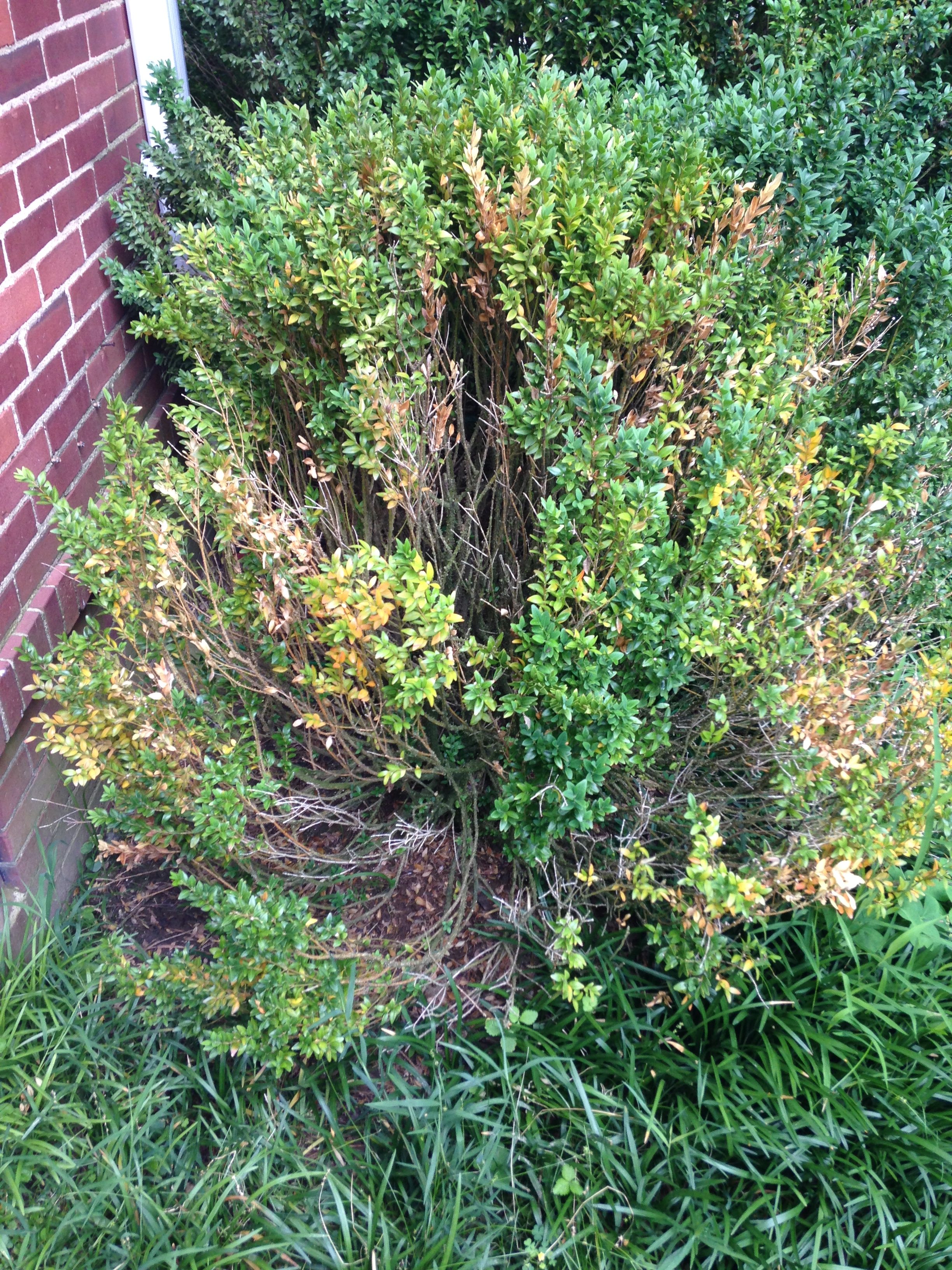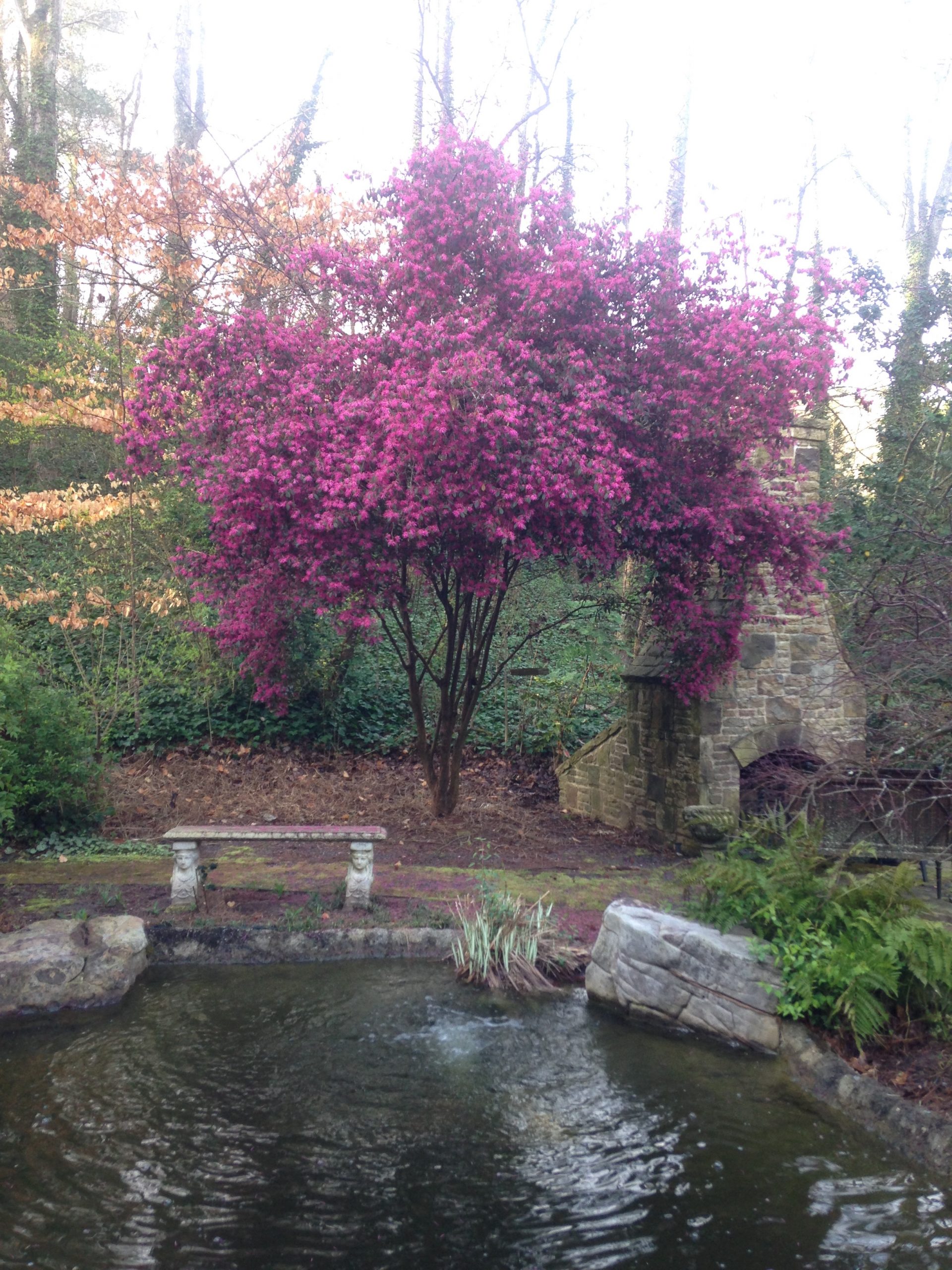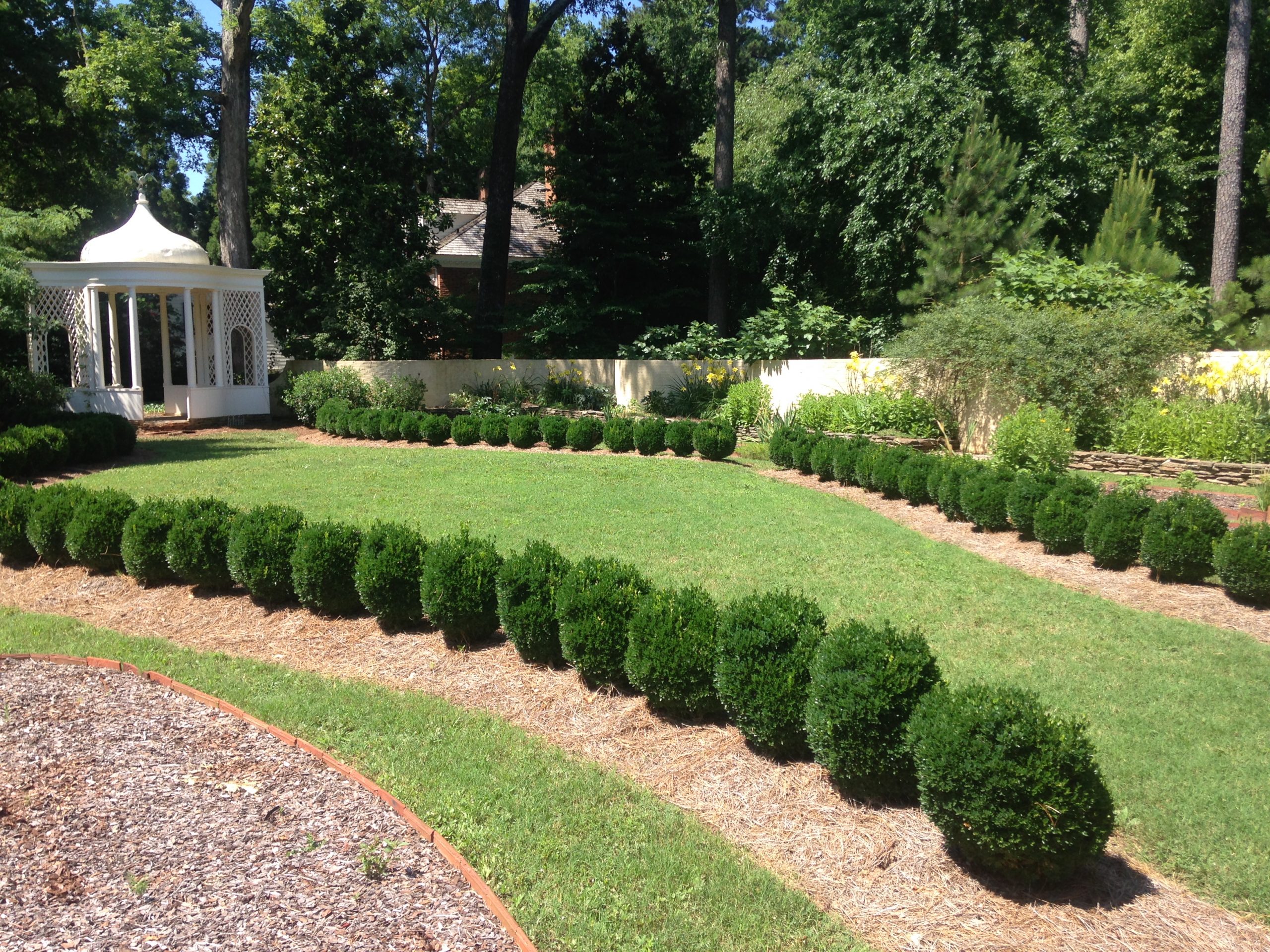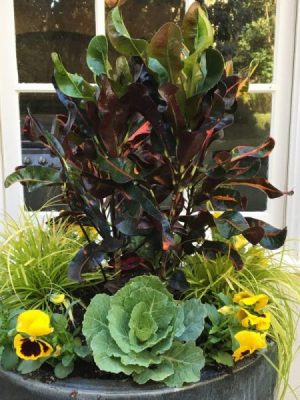Boxwood care in Atlanta can be a challenging responsibility with the increase in Boxwood blight and other boxwood diseases. Long, hot summers, oppressive humidity and rainfall that ranges from rainforest conditions to drought. One component of professional Boxwood care is managing the environmental conditions that can be managed (initial placement, controlling the surrounding plants and trees).
After that, it comes down to proper Boxwood care and maintenance. The most important component of effective Boxwood care and maintenance is proper pruning…hand pruning, that is. Unfortunately, hand pruning is fast becoming a lost art. With the typical landscaper being a 25-40 year old man, gas-shears are like the Holy Grail – they’re fast, they’re loud and they run on gasoline! Gas-shears may have a purpose, but should never be used on a Boxwood. Gas-shears contribute to the rampant spread of disease.
Hand pruning Boxwoods, one of the staples of the Atlanta landscape, is an art that is rarely practiced. In this day of power tools for every task, few Atlanta landscapers have the know-how to properly prune Boxwoods.
Proper hand pruning is critical to the long term health of all plants (See article: Benefits of Proper Pruning). It creates a loose, relaxed canopy, which allows more sun and airflow throughout the plant. Fungus, insects and the Boxwood blight tend to thrive in dark, damp, still conditions. Whether or not you currently have problems with your Boxwoods, proper pruning should be a priority because it has preventative benefits. If that’s not enough, hand pruning also encourages stronger growth throughout the entire plant, eliminates sagging branches and creates a continuous flush of rich, new growth.
Have you ever seen Boxwoods with big gaps in the canopy so you can see all the way through the plant? Proper pruning, over time, will correct this problem.
How To Prune in the Age of Boxwood Blight:
If you decide you are in need of some basic Boxwood care and maintenance, the best answer is to call us. We can definitely help and you’re less likely to be stung by a Yellow Jacket, bitten by a snake (yes, snakes do like to sun themselves in Boxwoods), or sweat…yuk.
Tip: There are several ways to determine the pruning needs of a Boxwood. The easiest is to look at the interior of the plant – if the interior is void of new, green growth, chances are the canopy is too dense and it should be pruned. Another clear sign is that the branches are beginning to sag, leaving gaps in the canopy. This sagging will not fix itself, and the recovery period for a Boxwood is slow.
If you decide to take it on yourself, here are a few tips.
These days, with Boxwood blight spreading quickly across Atlanta, your first step should be a quick inspection of each plant to make sure there are no areas of concern. If you see yellow or brown leaves, or anything of concern, the safest approach is to stop what you’re doing. Take a cutting to your local extension office for diagnosis before making your first cuts. The last thing you want to do is spread disease from a single plant to 15 others.
If you end up making a trip to the extension office, don’t forget to sterilize your pruners after cutting your samples. (See article: Sterilizing Pruners & Garden Tools). With all pruning, be aware of the potential to spread disease. Boxwoods are especially sensitive.
If there are signs of boxwood blight or disease, and you have to prune the plants to improve conditions, you should prune one plant at a time, sterilizing your pruners after every single plant. This is a slow, careful process and can be dangerous when pruning a hedge of plants, or plants that are co-mingled together – you might cut an adjacent plant by accident with “dirty” pruners.
When we hand prune Boxwoods that are at-risk, we tend to prune 25%-35% of the branches, but you can use your own judgment. We take an aggressive approach to opening up a plant to absorb more light. As a general rule, we prune deep into the plant, pruning branches down by 6” or more. It’s not uncommon for us to prune a few branches down by one-half. We also prune off any wormy or noodle-like growth that wraps around the interior of the plant. The goal is to focus on the healthiest growth.
When you properly prune a Boxwood, it will amaze you how much growth you can remove without it being noticeable. We can fill half of a 30-gallon trash can from a single 36” Boxwood and it’s barely noticeable.
The second critical component of proper Boxwood care is water – not just how much, but how as well. Rarely do we see problems related to insufficient water. Most problems come from too much water (volume), too much water (frequency) or improper watering (watering the leaves, not the roots). There is no way to recommend a watering schedule without evaluating your particular environment, but common sense works here. If the soil is very dry and sandy, water the roots (not the leaves if you can avoid it). If the soil is wet and muddy, don’t water.
Irrigation systems are the cause of a lot of problems. Most were installed to water everything en masse – it makes the cost of installation substantially less. Unfortunately, grass needs water far more than Boxwoods, so you are put in a lose-lose situation: either you under-water your grass or over-water your Boxwoods. If this is your situation, find a good balance and keep in mind that less-is-best in almost all landscaping decisions: less fertilizer, less fungicide, less insecticide, less water.
To highlight the seriousness of the Boxwood blight, here are two important facts:
- First, there is at least one strain for which there is no cure. The plants just die.
- Second, it appears to be soil-based. This means that a Boxwood that dies from boxwood blight will probably have to be replaced with something other than a Boxwood. This may not be a big issue if it’s a stand-alone plant, but it can get expensive if the blighted plant is part of a hedge, matching “bookends” or part of a larger design.
To minimize your chances of having to deal with boxwood blight, exercise an ounce of prevention with proper care and pruning. If you are already experiencing problems, take great care in minimize the spread of the disease.
Happy gardening.




